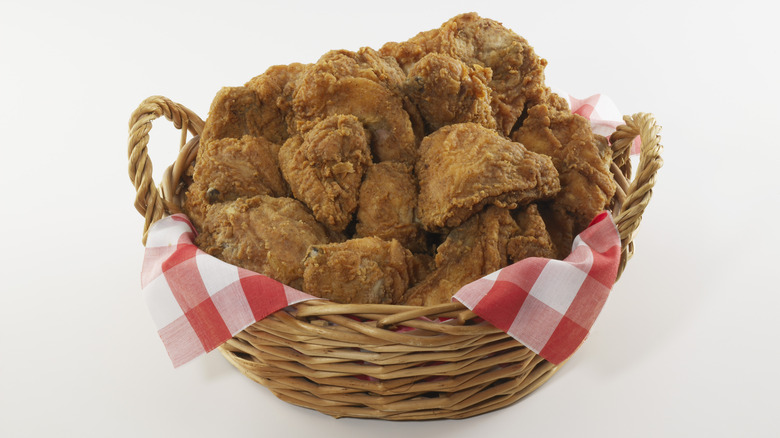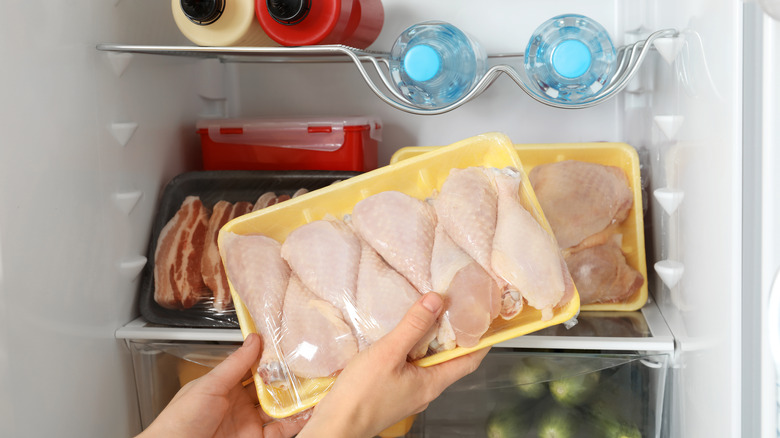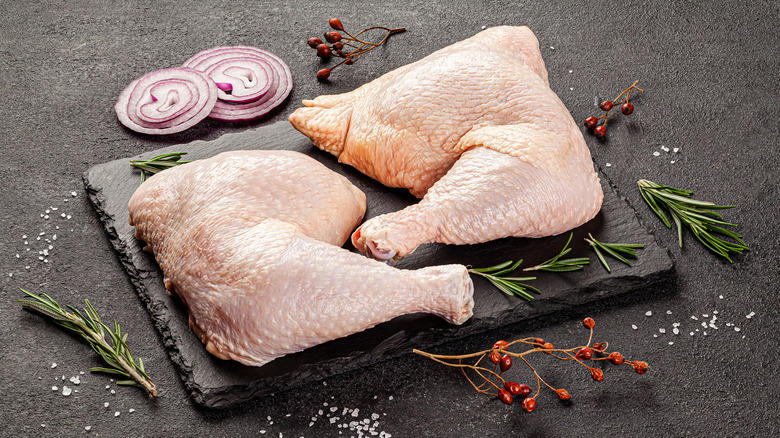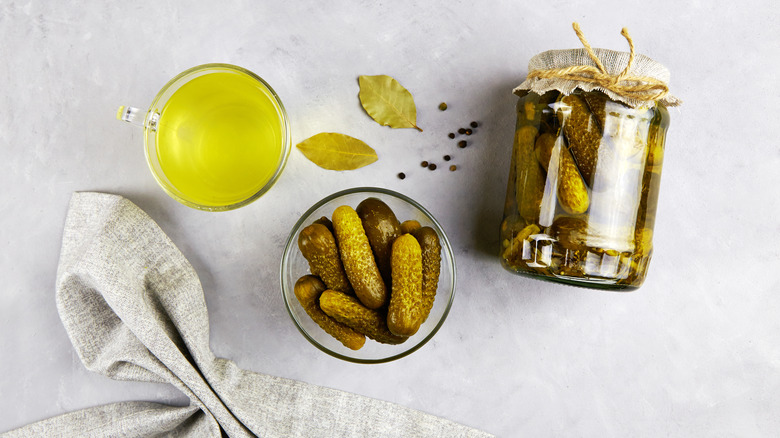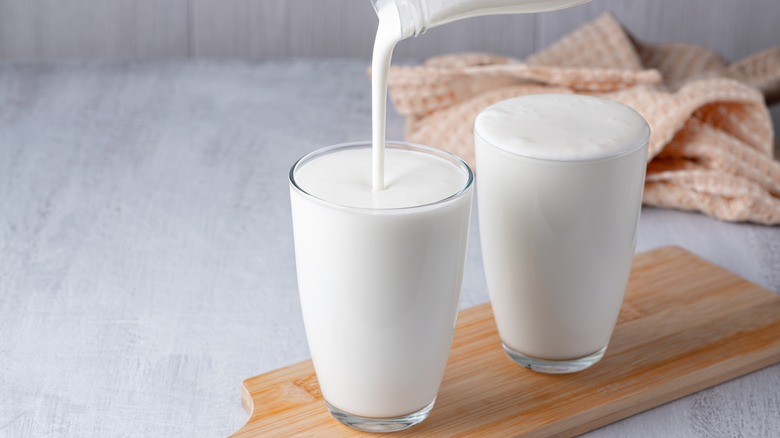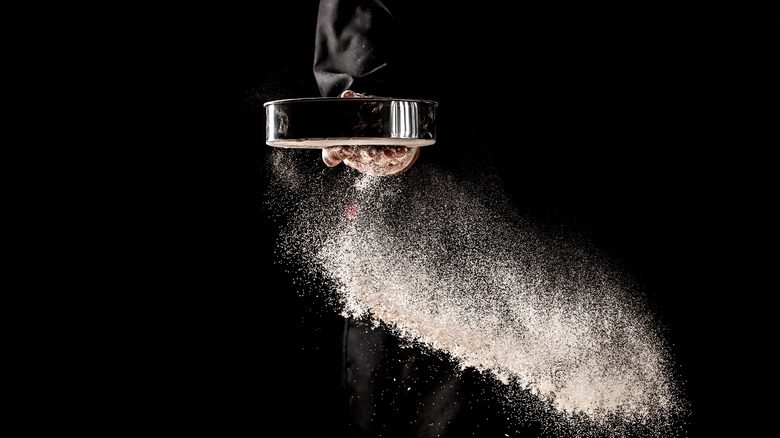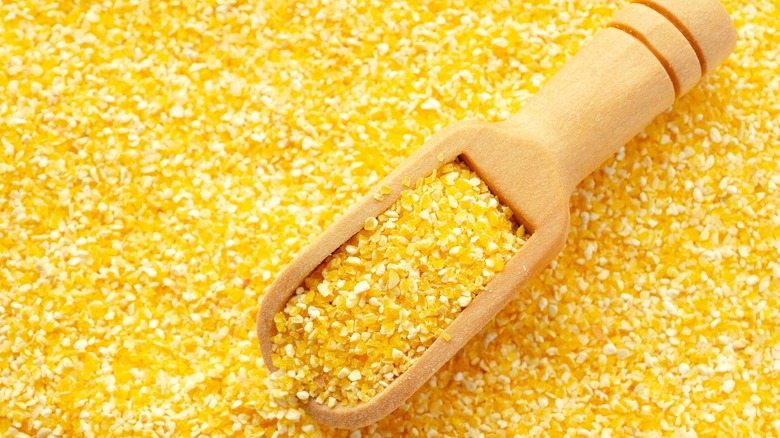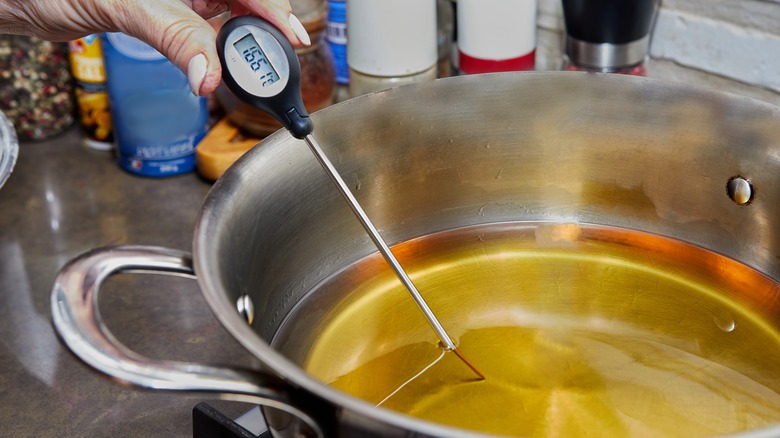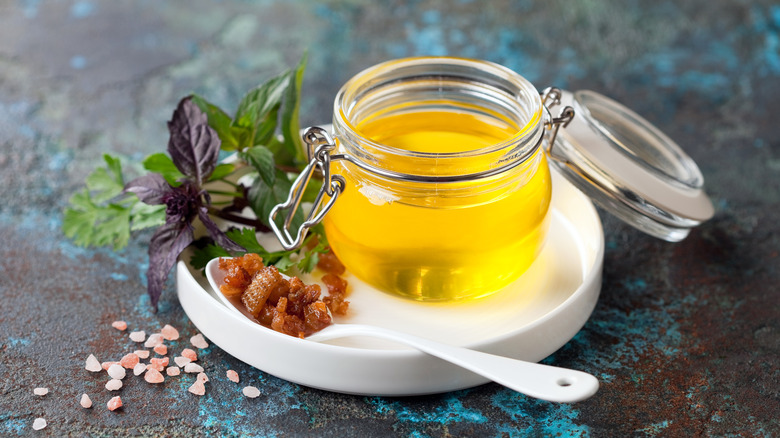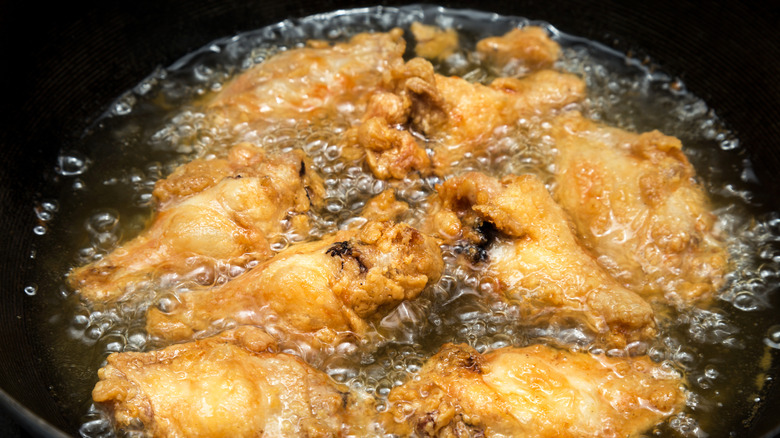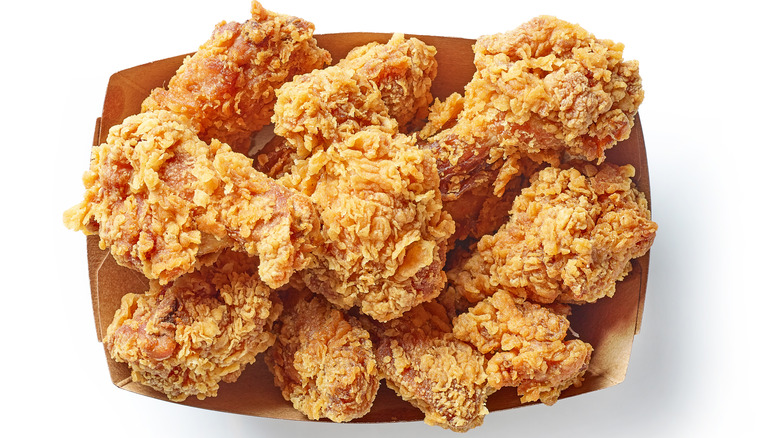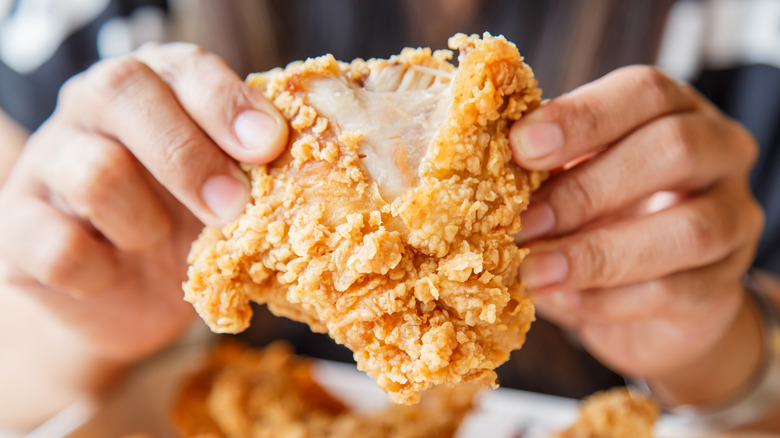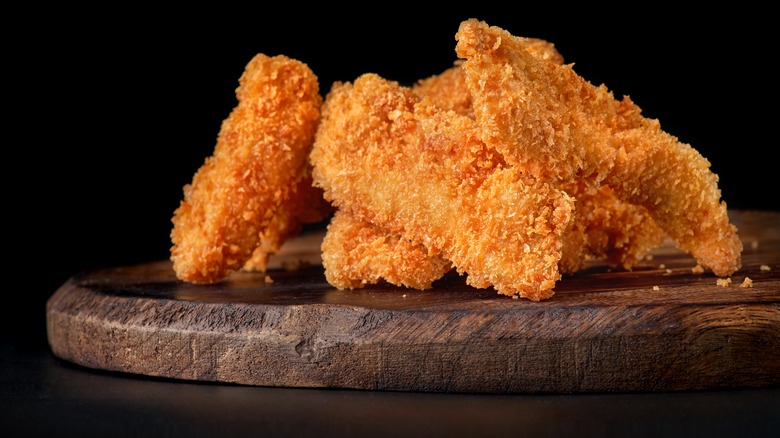12 Biggest Mistakes You're Making With Fried Chicken
Piping hot and crunchy, fried chicken is a beloved comfort food. Whether you prefer traditional breading or you love Nashville Hot, fried chicken is homey, filling, and a true indulgence. While it seems like the height of simplicity, making fried chicken is actually a multi-step, hours-long process. Sure, you can pull the chicken out of the fridge, dip it in flour, and toss it in oil, but what you'll end up with will be a far cry from what you're used to experiencing at restaurants or at your great aunt's summer picnics.
Don't sell yourself short if you're craving the crispy stuff; if you plan on indulging in fried chicken, do it the right way and avoid these pitfalls. It might take some additional time, but steering clear of shortcuts and actually taking extra care to prep and cook your chicken will result in a meal that is worth the effort.
Let's explore some of the biggest mistakes that are often made with fried chicken and how to avoid them.
Using cold chicken
We've all been guilty of this one from time to time: You pull the meat that you're planning to use for dinner from the fridge and put it directly into your pan once you have it out of the packaging. It's so easy to bypass the step of resting your meat before cooking it.
However, bringing your chicken up to room temperature is a very important stage of your cooking process. when you allow your chicken to sit out on your counter for an hour or so, you're ensuring that, once it does hit the frying oil, it will cook more evenly. If you cook the chicken directly from the fridge, then you're setting yourself up for portions to be underdone and simultaneously overdone because the outside of the meat will cook much faster than the inside. Take the extra time and allow the overall temperature of your raw meat to even itself out to close to room temperature and you'll have juicy fried chicken that's cooked perfectly all the way through.
You're not patting the skin dry
What's the best part of fried chicken? The skin, of course! If you're planning on making fried chicken, you'll want to be using chicken parts that still have the skin on. And you'll also be wanting to be patting the skin dry with a paper towel while it is coming up to room temperature.
Interestingly enough, starting your frying process with dry skin on your chicken will lead to a crispy exterior and a moist, juicy interior. By drying off the skin, you're removing extra moisture and also allowing the all-important brine to more easily penetrate your chicken meat. So don't skip the step of pressing a paper towel onto the chicken, or, if you have the time, leaving your chicken uncovered in the fridge overnight to dry out the skin before bringing it out onto the counter to come up to temp. The fate of your crunchy skin depends on it!
Don't skip the brine
An invisible component of your fried chicken is your pre-frying brine. Once your chicken has been patted dry and the chill has gone off of it, you'll want to mix up a delicious brine for the chicken to soak in for an hour or so.
Why is the brine so important? Brine is a salty liquid that usually contains an acidic element as well as herbs or spices. This mixture penetrates the meat of your chicken and flavors the food from the inside out. It's a way of ensuring that the inside of your fried chicken is just as flavorful as the breaded outside. In order to achieve the best brine, it's as easy as using leftover pickle juice that you probably already have in your fridge. You can also splash in some liquor of your choice (vodka is flavorless, but something like bourbon would impart a sweeter flavor) to the brine. The liquor evaporates faster than other liquids during the cooking process, giving you even crispier skin.
A buttermilk bath is crucial
Once your chicken has brined, you might feel like you've done everything you need to ensure the best fried chicken. Well, there's actually another crucial step you need to take for the perfect poultry.
Poaching your chicken in buttermilk will be your secret step to culinary success with your fried chicken. Buttermilk is slightly acidic, and because of that, by slowly cooking your chicken ahead of time in a bath of buttermilk, you're tenderizing the meat of the chicken and also infusing it with even more flavor. You're also precooking the meat, which means that you can cook the batches of chicken ahead of time before breading and frying the chicken on the day you want to eat it. By poaching the chicken ahead of time, you also don't have to fry it nearly as long, just enough to get the outside crispy. Nice and easy.
Bland dredge is a bummer
Now that your meat is properly brined, seasoned, and pre-cooked, we can turn our attention to the breading. This element is called the "dredge" and it typically consists of flour. But while flour is important, you shouldn't stop there. After all, the golden brown breading is the most visually appealing part of your chicken. You don't want to bite into it and get a mouthful of flavorless crunch.
Be sure to add plenty of salt, pepper, garlic, and onion powder to your dredge. Herbs like thyme or sage can be added to give your chicken an herbaceous boost. Or if you're looking to add heat to your chicken, mix in some Cajun or Nashville Hot blend into the flour. Also, shake off extra flour before frying to make sure the coating is even and light — you don't want to chomp into a gummy wad of undercooked batter when you're enjoying your fried chicken.
Don't sleep on extra crunch
While you certainly can make do with your seasoned flour as your dredge, if you really want to make your chicken extra crunchy and crispy, you'll want to throw in an additional ingredient. Cornmeal adds additional texture to your fried chicken coating. It's a more toothsome grain than standard flour, which means that it will add structure to the fried skin of the chicken.
You can add a few tablespoons of cornmeal to your seasoned flour dredge, but you don't want to overdo it. Cornmeal doesn't cook in oil the same way that flour does. If your dredge is more than 50% cornmeal, then you will find the breading greasy, chewy, and lacking. So use this secret weapon sparingly in order to get the very best crunch. It would be a shame to come this far and fall down on the breading front.
Make sure your oil is hot enough
While you're prepping your dredge, use the time to get your oil heating on the stove. It's imperative that you get the temperature right on your frying oil. If the oil isn't hot enough, your breading will absorb extra oil and turn out greasy and lacking crunch. If your oil is too hot, then your breading will burn.
The best temperature for frying chicken is between 300 to 325 degrees Fahrenheit. Get yourself a good oil thermometer and keep an eye on the oil as it's warming up. The tricky part is that the oil's temperature will drop when you add the chicken to it. So that means that you want the oil to be heated to between 350 to 360 degrees Fahrenheit before any meat is added. That way, once you start cooking the chicken, the temperature will drop to the perfect temperature for crispy chicken.
Take advantage of flavorful fats
Speaking of oil, if you really want to boost the flavor of your fried chicken, you might want to expand beyond your standard vegetable or soybean oil. While lard and vegetable shortening (like Crisco) are often favored because of their high smoke point, they don't impart much flavor. This is often seen as a positive trait because you don't want to be tasting the flavor of oil when you've put so much effort into the seasoning of your chicken.
However, the right fats have just the right amount of rich flavor that actually benefits the taste of your chicken. To that end, you might want to try frying your chicken in duck fat. Duck fat is a favorite of foodies across the world because it has a rich, slightly gamey flavor that it imparts to any food that's cooked in it. It also has a smoke point of 375 degrees Fahrenheit, which makes it perfect for frying chicken.
Be patient and don't overcrowd your pan
You've come so far on your chicken journey! Don't get too excited and throw everything into the hot oil at once. It's easy to want to rush through the cooking process, but overcrowding your pan is a recipe for disaster.
As we mentioned before, adding your chicken to the hot frying oil lowers the temperature. If you add all your chicken at once, the temperature of the oil will drop too quickly and your food won't cook evenly. You want to make sure that you're maintaining that proper 300 to 325-degree Fahrenheit temperature of the oil to get the best results out of your chicken. So even though it might be difficult to wait, be patient and fry your chicken in small batches. Keep a thermometer handy and check the temperature of the oil often. If it has dropped too low, allow it to come back up before adding any more chicken. It will be worth the wait.
Make sure your pieces are of similar size
It's true what they say: size matters. At least when it comes to cooking. When you're frying your chicken pieces, whether it's the drumsticks, thighs, or breast, you want to make sure that the pieces are all the same size.
If some pieces are bigger than others, break them down before breading them. Similar sized pieces ensure even cooking and you don't want a mish-mash of overcooked and undercooked pieces of chicken on your dinner platter.
The best way to ensure your pieces are all a manageable size is by breaking down a whole chicken yourself. It sounds a lot more intimidating than it is, and once you learn how to butcher a whole chicken, you'll find yourself saving money, since buying the bird whole tends to be more cost-effective than buying it pre-butchered. It's an important skill to hone as part of your culinary repertoire.
Don't let it get soggy
Once your chicken is golden and delicious, you want to lift it out of the frying oil and allow it to drain. It seems to make perfect sense that you want to lay the chicken onto paper towels to absorb the excess oil. After all, you don't want your dinner to be overly greasy, right? Well, you might actually want to rethink your post-frying draining process.
Using paper towels might be why your fried chicken is getting soggy. When you lay the chicken onto the paper towel, you're creating the perfect environment to trap steam, which spells doom for crispy breading. Instead of using a bed of paper towels to drain your chicken pieces, put a wire cooling rack onto a sheet pan and let the chicken rest on that. The wire rack allows the chicken to cool evenly without the steam building up to sog out your dinner.
Let it rest before chowing down
You've finally completed the long process of making the perfect fried chicken. Everything is perfectly hot and crunchy and you can't wait to dig in. But hold off. Just like steak, chicken benefits from being allowed to rest for a few minutes before you eat it.
There are a few reasons why you should let your fried chicken rest after it comes out of the oil. Obviously, you want the chicken to cool down. Biting into piping hot chicken will just lead to you spoiling the rest of your meal with a burned mouth. So, as hard as it might be to resist temptation, just allow the chicken to cool for 10 to 15 minutes. The chicken will still be hot, but you won't risk a scorched tongue.
The second reason you want to allow the chicken to rest is so that the juices in the chicken meat have a chance to redistribute. The rested chicken will be much juicier and more succulent if you give it just a few minutes to settle. After that chicken has rested, though, you should go nuts and truly enjoy the warm, crispy fruits of your labor.
